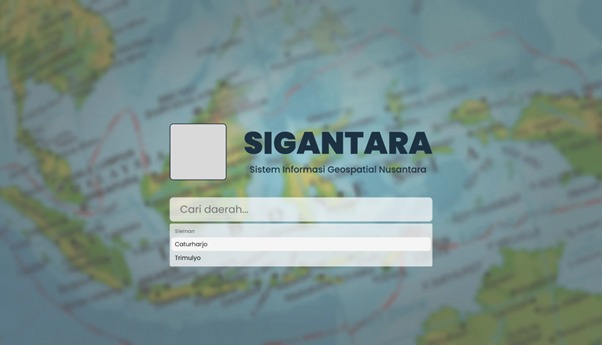
The misuse of land, such as illegal land conversion and abandonment, has caused financial and ecological losses while hindering governance transparency. These problems also pose challenges to achieving the Sustainable Development Goals.
To address the issue of land misuse, students participating in KKN-PPM UGM (Universitas Gadjah Mada’s community service program) introduced a digital geospatial information system. This approach aims to establish integrated, transparent, and accountable land asset governance, including the development of a web-based application named Sigantara, short for Sistem Informasi Geospasial Nusantara.
“We built Sigantara so that villages can manage their geospatial assets effectively, and more importantly, to make the information accessible to the public for greater transparency,” said Brandon, Head of Unit YO-007.
Brandon explained that Sigantara is a Geospatial Information System (GIS) specifically designed as an internal information system for villages, where data can be managed independently while remaining accessible to the wider community. Sigantara can be accessed at https://sigantara.vercel.app.

Through this platform, users can view maps of Trimulyo Village in Sleman Regency with multiple information layers. These maps provide a clear visualization of administrative boundaries, land use, and other geographic data. Beyond spatial mapping, Sigantara also features statistical visualizations to make spatial information easier to interpret.
“The data is presented in visual formats such as pie charts and bar charts, making it simple for the public to analyze key information, for example, comparisons of MSMEs by hamlet category or statistics on health facilities,” he added.
According to Brandon, the KKN-PPM UGM student team successfully collected and visualized various essential spatial datasets in Sigantara. By digitizing land data management at the village level, the platform not only addresses land issues and the lack of transparency but also provides a foundation for more accountable and participatory governance.
“This digital platform can be further developed and optimized by the village and future KKN-PPM UGM teams to support sustainable development planning, empower communities, and safeguard vital village assets for future generations,” he concluded.
Author: Kezia Dwina Nathania
Editor: Gusti Grehenson
Photographs: KKN-PPM UGM Unit YO-007

